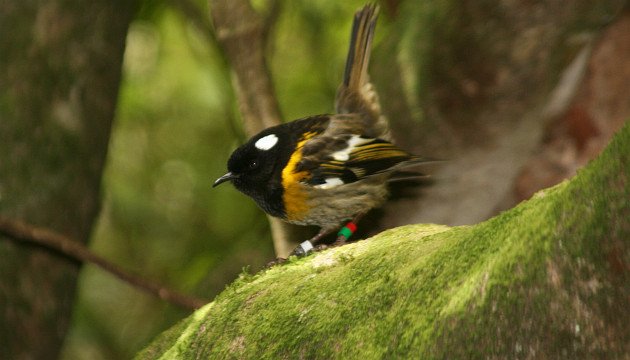
It’s mid-July, which among other things means that those of us in North America are starting to check local mudflats for returning shorebird migrants and waiting impatiently for the AOU to hurry up and create five species from the Clapper-King rail complex (the reasons for which we covered last year). So while you’re waiting for that or for low tide, here are a few reads and bits of news on bird taxonomy and systematics that have caught my eye over the past few weeks.
A new genus for the American Tree Sparrow
David L. Slager and John Klicka propose the new genus name Spizelloides for American Tree Sparrow, which is not a Spizella sparrow and is instead distantly related to Fox Sparrow, Zonotrichia, and the juncos.
And more sparrow shake-ups to come
The proposal above is one of many that will emerge from a major new paper by Klicka et al., A comprehensive multilocus assessment of sparrow (Aves: Passerellidae) relationships. For one thing, as other studies have recently found, New World sparrows belong in their own family, Passerellidae; they are not closely related to Old World Emberiza buntings (see John Boyd’s treatment of the groups). For another, it’s time that the AOU NACC put the grassquits, flowerpiercers, yellow finches, grass finches, and other misclassified tanagers into the Thraupidae where they belong, as the AOU SACC did two and a half years ago (SACC Proposal 512). And, we can expect to see the sparrows currently classified in Ammodramus shuffled around. There’s a Birdforum thread with good discussion on that last point and others of interest, and there’s a tree and good discussion in pending AOU SACC Proposal 633 as well.
Birds still are dinosaurs
A new paper by Alan Feduccia and Stephen Czerkas purports to show — and a handful of sites credulously reported — that birds are not dinosaurs after all. Just in case you were momentarily confused, this post should help.
Elephant birds and their kiwi kin
This one came out in May, but in case you missed it, it’s too good to pass up: Researchers recovered extinct Madagascan elephant bird DNA and found that they were most closely related to New Zealand’s kiwis, a fantastically cool result that Ed Yong and Darren Naish (and assorted commentators) discuss at length in these posts and the comments, which are well worth a read:
- The Surprising Closest Relative of the Huge Elephant Birds
- Ratites in trees: the evolution of ostriches and kin, and the repeated evolution of flightlessness (ratite evolution part II)
Western Scrub-Jay is three species
Gowen et al. lend support to the theory that Western Scrub-Jay is actually three species in a just-published paper: Speciation in Western Scrub-Jays, Haldane’s rule, and genetic clines in secondary contact.
Songbird relationships
A new paper by Keith Barker furthers our understanding of relationships among several passerine groups. His results indicate that the puzzling African hyliotas, which have been placed in many different families, belong near Paridae (chickadees and tits), near the base of the Passerida, presumably in their own family, the name for which is not immediately clear, as John Boyd points out. The Stitchbird and New Zealand wattlebirds are closest to the Australasian robins (Petroicidae), all lying just outside the Passerida between berrypeckers and rockfowl. (Here’s a tree from the paper.)
Stitchbird (Notiomystis cincta) photo in header cc-by-sa Duncan Wright.













What is the striking little bird in your photograph at the top, the one with colour-rings?